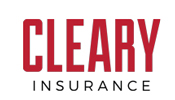Prepare Your Home for Spring Storms
Spring is known for its rapidly changing weather – and that can mean severe storms. Help get your home and family ready with these tips.
Let it flow. Remove winter’s debris from your gutters, drains, and downspouts so that heavy rains can flow freely off your roof. Be sure that downspouts are secure and that water is draining well away from your home and not toward your foundation-add extensions if necessary.
Trim the trees. Prune lanky limbs and branches so they don’t snap off in a windstorm and land on your roof or a power line. In the event of Roof Hail damage, you might want to consult with an experienced roofer in your area to fix the roof and get it back to its original shape.
Check the pump. If your home has a sump pump, test it to make sure it’s clean and operable and that the outflow is draining properly. Consider adding a battery-powered backup sump pump to keep the system working if the power goes out.
Stow your gear. When strong winds are forecast, secure patio furniture and other yard items or put them in your garage or a shed so they don’t become dangerous projectiles.
Cover up. Close and secure storm shutters if your home has them. Keep blinds and shades drawn and tape or tack window coverings around the edges to help protect you from broken, flying glass. Tie thick blankets over vehicles that are exposed to the elements to diminish damage from hail.
- If power outages are common in your area, prepare an emergency kit and keep it in a central location in your home. Basic supplies should include:
- Flashlight and fresh batteries
- Battery or solar-powered weather radio and/or transistor radio
- First aid supplies Hand sanitizer or wipes
- Three-day supply of canned or dried food and water
Concerned about your personal insurance coverage? At Cleary, our experienced Personal Lines department will work with you to evaluate your insurance needs, identify exposures, and create a customized insurance portfolio. Give us a call today at 617-723-0700.
Four Important HR Issues to Monitor for 2016
Employers have new challenges to contend with in 2016, resulting from Supreme Court decisions, federal and state legislation, and actions by federal regulatory agencies. There is a real cost for employers who fail to comply with new laws. For example, the most recent Performance Accountability Report for the Equal Employment Opportunity Commission (EEOC), states that victims of discrimination received more than $525 million from private and government workplaces in 2015.
The following are four important issues that should be closely monitored in 2016:
- Overtime Rule Change: The Department of Labor (DOL) has proposed a rule to expand who is entitled to overtime pay. Once regulations are finalized, it is possible that many overtime-exempt employees will become eligible unless employers raise their salaries—a move that could cost employers billions of dollars.
- Same-sex Marriage: Since same-sex marriage is now accepted at a federal level, employers are required to provide the same benefits to same-sex couples as they do for opposite-sex couples. Employers must revisit their policies and practices regarding Equal Employment Opportunity (EEO), employee benefits, leave policies, marriage statuses and tax information in order to ensure that they treat all married couples equally.
- National Labor Relations Board (NLRB) Pursuit of Workplace Policies: The NLRB has been proactive in pursuing employers whose handbook policies can be reasonably interpreted as infringing upon the rights of employees to engage in protected conduct. In doing so, the NLRB has found that certain employer policies, such as those that deal with social media, confidentiality and employee communications, violate employee rights. Because of this development, current workplace policies should be reviewed and drafted carefully to avoid ambiguous language that could be interpreted as interfering with the right to engage in protected, concerted activity.
- Health Care Reform: Many employers are faced with the challenge of complying with the new annual health care reporting requirements under the Affordable Care Act (ACA). Applicable large employers (ALEs) and non-ALEs with self-insured plans were required to provide Forms 1095 or 1094 to their employees for the first time starting in 2016 for the 2015 tax year. Penalties for not doing so, or for providing inaccurate information, could be substantial. It is important for employers to know which forms to complete and what information to include.
Employers should also keep an eye on any relevant implications that might emerge as a result of the 2016 presidential election—specifically in regards to the Cadillac tax delay. Should the Cadillac tax go into effect in 2020, employers need to be sure that they are either ready to pay the tax or ready to make necessary changes to their health care plans.
At Cleary, we know how important a comprehensive benefits package can be to your continued success. Give us a call today at 617-723-0700 and we will work with you to create a plan that meets your business objectives, takes into account state and federal laws, and capitalizes on incentives and innovative solutions now being offered.
Client Spotlight: Butler-Dearden
We are pleased to spotlight Butler-Dearden in our winter newsletter. They are a family owned and operated wholesale distributor headquartered in Boylston, Massachusetts.
Butler-Dearden has been providing superior quality, service and value to their customers since 1882. They began as a twine and packaging store and grew into offering janitorial supplies, office papers, packaging materials, and food service supplies. Their state of art facility allows for an efficient operation so they can deliver and maintain the quality customer service they are known for.
They continue to be successful by keeping their core ideal that excellent customer service is the most important product they deliver!
Click here to learn more about them!
